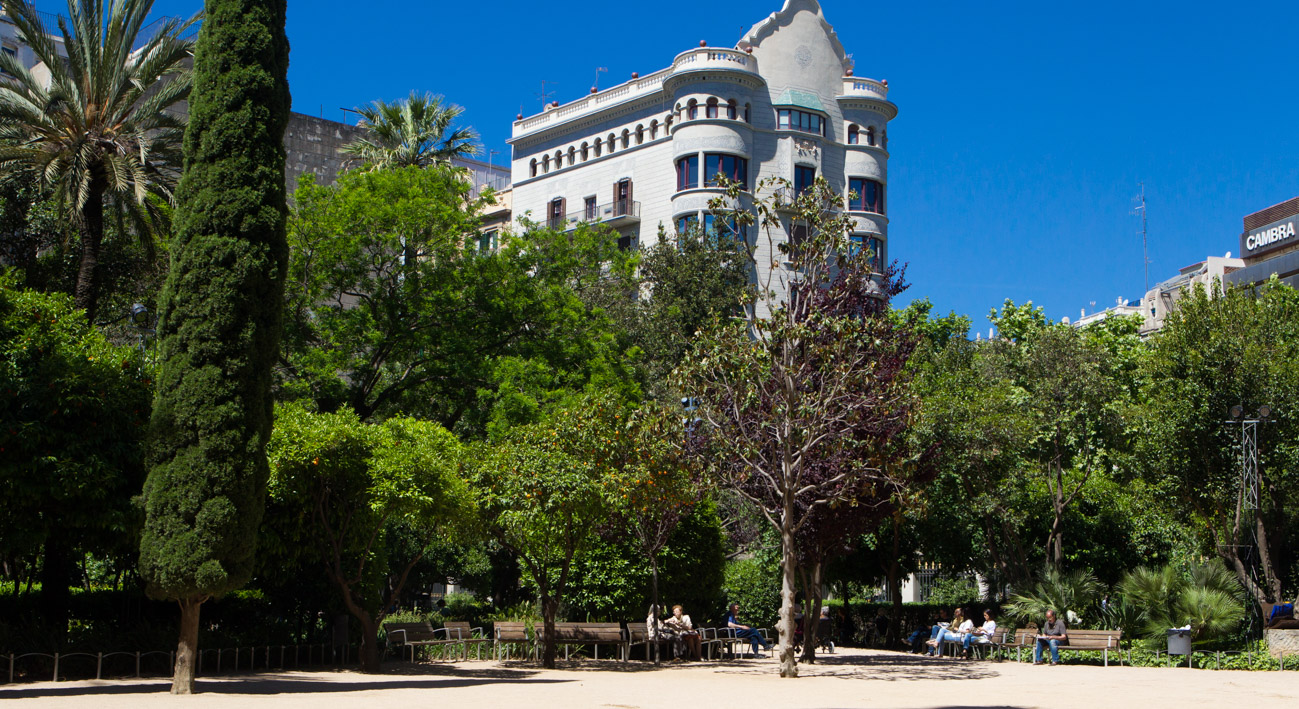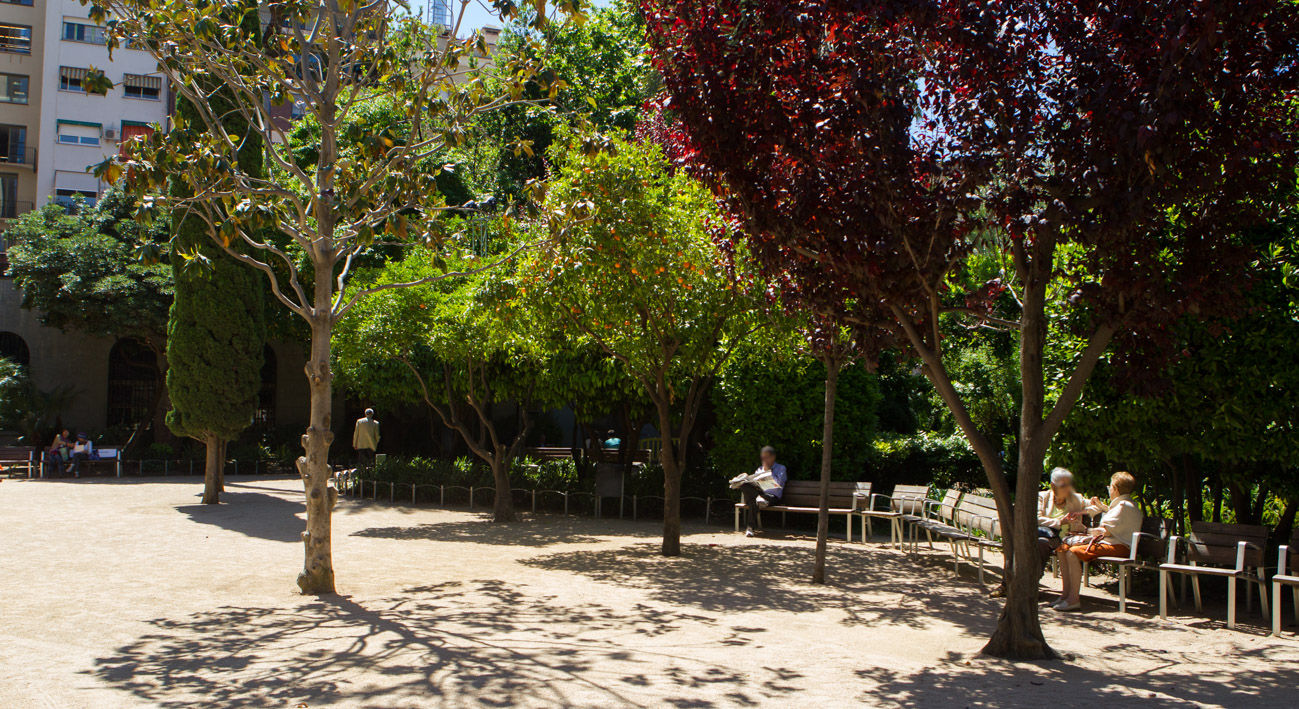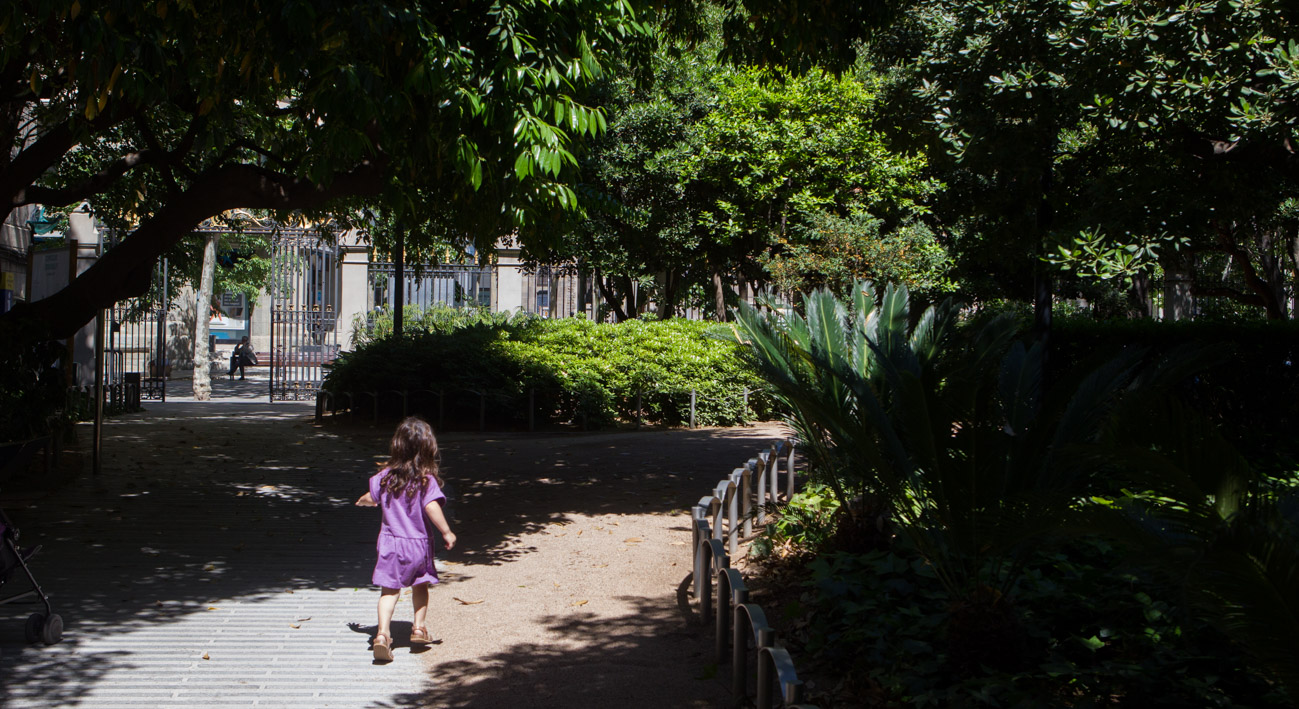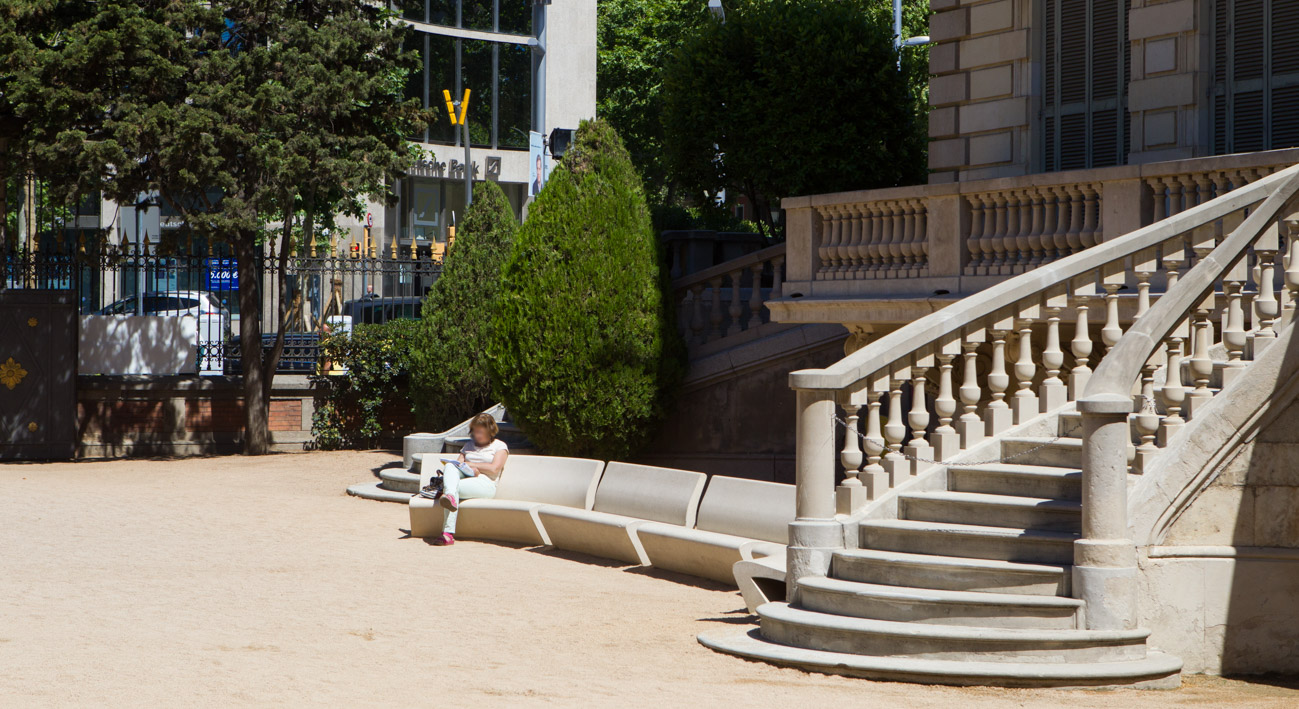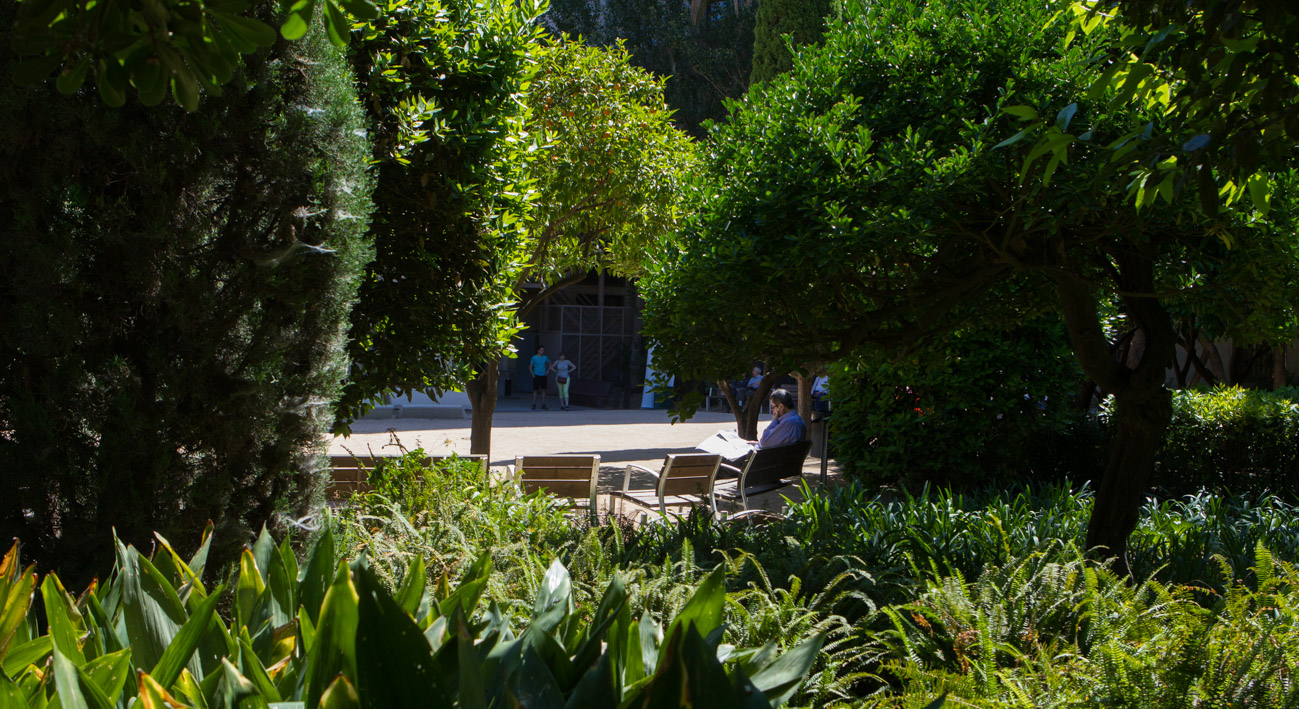These gardens are surprising for the number and size of the plants that pack their three large parterres. They stand out for the intense, very vivid green that changes into a thousand hues and filters the sunlight. The sunny area extends right up to the Palau Robert. Two winding gravel paths spread out, forming small resting squares.

History
The Palau Robert and its gardens were originally the family residence of Robert Robert i Surís, a son of Torroella de Montgrí. A highly influential financier in Barcelona, he became the Marquis de Robert, the Count of Serra i Sant Iscle and the Count of Torroella de Montgrí with grandee status among Spain’s nobility. In 1936, the Marquis of Robert commissioned a project for a new building on the land occupied by his mansion. It was supposed to house a hotel, festival hall, theatre, cabaret and pelota court. But the venture did not prosper and, later that year, Josep Tarradellas, the First Minister of Catalonia, turned the Palau Robert into the headquarters of the Generalitat’s Department of Culture. Once the Spanish Civil War had ended, the Roberts family reclaimed the property, intending once again to build a hotel and entertainment hall, in 1944. The Generalitat acquired the building, garden and outbuildings in 1981, following Spain’s return to democracy. It is now houses the Catalan Information Centre, which provides tourist and cultural information.

Art and Architecture
The Neoclassical building was designed by the French architect Henry Grandpierre and built with stone from Montgrí mountain (Baix Empordà).
In the gardens there is a sculpture called La lluna (the Moon), sculpted by Kiku Mistu in 2001.It is part of that artist’s educational project entitled El llenguatge de les flors (The Language of Flowers), involving the installation of lectern-sculptures in parks and gardens. The sculpture is a stainless-steel and iron moon with a red lectern, painted by students at the Joan Amades School for the Blind. Inside, reflected on the shiny surface of the moon, is a poem by J. V. Foix És quan dormo que hi veig clar. The sculpture includes the text in braille.
-
- Phone number
- Tel.: 93 292 12 60
-
- Titularity
- Public center
- Address:
- Passeig de Gràcia, 107
- Districte:
- Eixample
- Neighborhood:
- la Dreta de l'Eixample
- City:
- Barcelona
Timetable
| Dies | Hores | ||
|---|---|---|---|
| De dilluns a dissabtes | de 09.00 h a 20.00 h | ||
| Diumenge i festius | de 09.00 h a 14.30 h |

